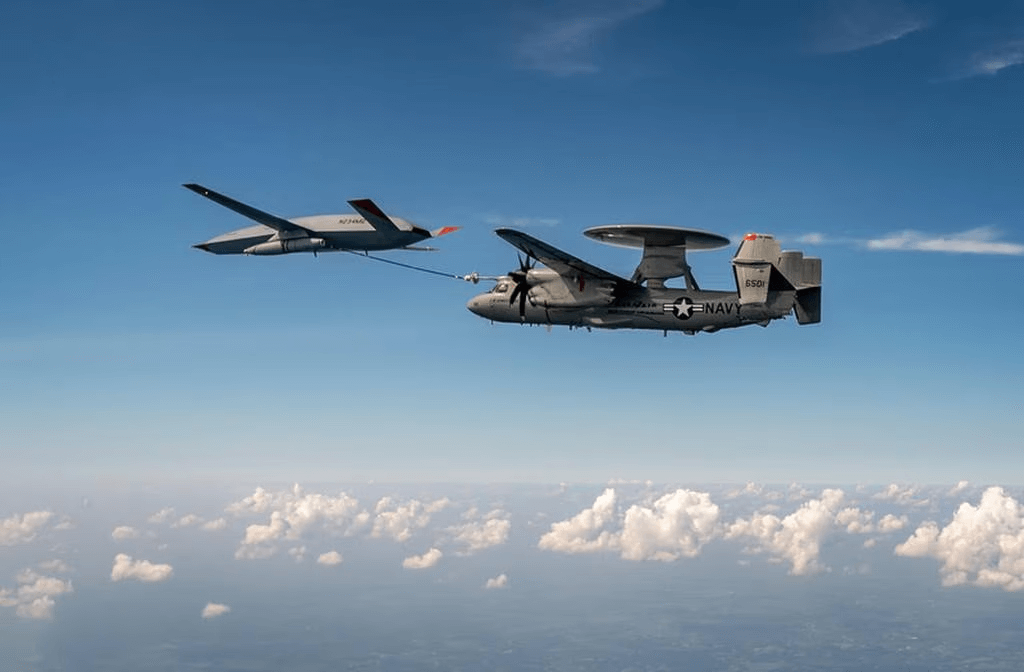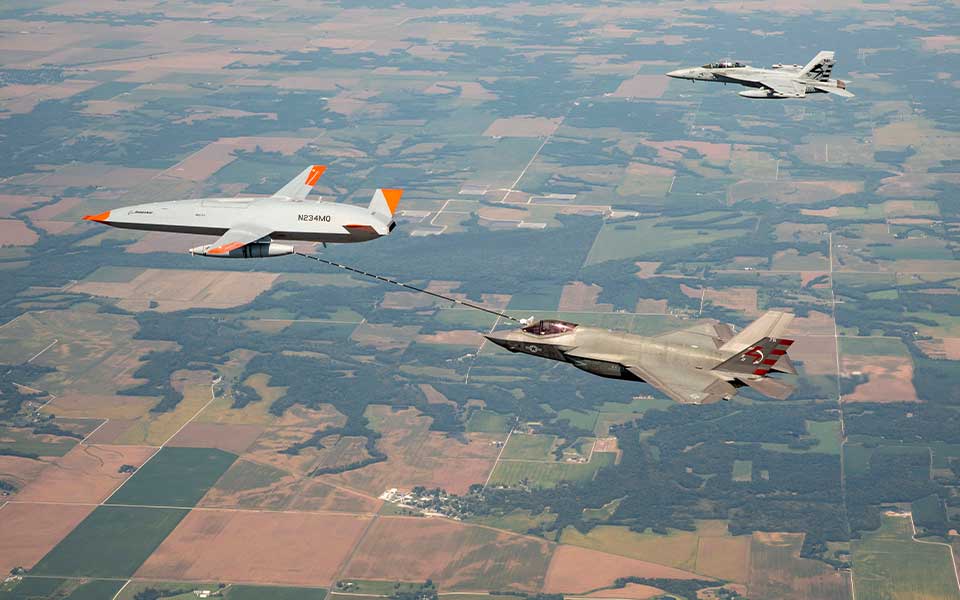With the handing over of the first MQ-25 Stingray for evaluation, the US Navy is one step closer to conquering the refueling obstacles of its tactical fighters like the F/A-18 Super Hornet and F-35 in the Pacific theater.
Boeing has announced that it has handed over the first MQ-25 Stingray to the US Navy for evaluation, as revealed by the company on February 21. This unmanned aircraft, hailed as the world’s foremost carrier-based operational vehicle, boasts capabilities in aerial refueling alongside intelligence, surveillance, and reconnaissance (ISR).
The US Navy plans to deploy a fleet of MQ-25 drones, augmenting the existing Boeing F/A-18 Super Hornet, Boeing EA-18G Growler, and Lockheed Martin F-35C fighters to bolster the Carrier Air Wing (CVW) and Carrier Strike Group (CSG).
Boeing’s announcement on X, formerly known as Twitter, emphasized that the delivered airframe will undergo a “rigorous airframe integrity evaluation” now. “Once operational, [MQ-25] will extend the range and capability of the [U.S. Navy’s] air wing,” Boeing added.
The journey to the handing over the MQ-25 Stingray began in 2018 when Boeing secured a $805 million contract to construct the initial four MQ-25 Stingrays, triumphing over competitors such as General Atomics and Lockheed Martin.
We've delivered the first U.S. Navy MQ-25 Stingray for testing. The unmanned carrier-based refueler will now undergo a rigorous airframe integrity evaluation.
Once operational, #MQ25 will extend the range and capability of the @USNavy’s air wing. pic.twitter.com/vbzySkoCRb
— Boeing Defense (@BoeingDefense) February 21, 2024
Subsequently, in 2020, the Navy exercised an $84.7 million contract to procure three additional drones, with plans to build a fleet comprising 76 units for $1.3 billion.
In a significant development in 2021, the MQ-25 T1 test asset successfully underwent integration into the carrier environment during a demonstration aboard the USS George H.W. Bush (CVN-77).
That crucial test validated the functionality, capability, and handling qualities of the unmanned aircraft’s deck handling system, paving the way for further advancements.
In September 2023, Boeing provided the visuals of its first pre-production MQ-25 Stingray tanker drone. At that juncture, the company disclosed that the MQ-25 showcased in the released footage was the first of nine examples scheduled for static testing.
Following the completion of static testing, the drones are slated to advance to fatigue testing, according to the company. This phase entails subjecting the airframes to additional stress tests to elucidate the formation of microscopic cracks in the fuselage and identify when these cracks reach a critical size.
These tests serve as crucial benchmarks to ensure airworthiness- before embarking on full flight tests with pre-production models- and assess the long-term durability of the aircraft.
The anticipated initial operational capability (IOC) for the MQ-25 was previously set for 2025. However, in April 2023, it was pushed back to 2026 due to construction delays.
MQ-25 Stingray Might Transform Dynamics In The Pacific Theatre
Once they are in service, the drones will play a crucial role in providing refueling support for the Navy carrier’s air wings.

The MQ-25, equipped with an impressive 15,000 lb of fuel ready for offloading within a 500nm range, emerges as a transformative asset capable of substantially extending the operational reach of tactical fighters like the Super Hornet and F-35C.
This remarkable capability has not escaped the notice of Chinese professional military circles, where it is perceived as a potential game-changer in the context of Pacific theater operations.
The significance of the MQ-25’s capabilities lies in its capacity to address the inherent challenges posed by vast distances in the Pacific region. With its ability to effectively double the range of tactical fighters, it presents a strategic advantage that could reshape the dynamics of aerial operations in the area.
This dedicated tanker capability will enable tanker-tasked F/A-18E/F jets to focus on their primary missions, thus expanding the combat capabilities of strike fighter squadrons and freeing up Super Hornet fleets.

Additionally, the MQ-25s are expected to be integral in conducting intelligence, surveillance, and reconnaissance (ISR) missions for the Navy.
There is a concerted effort within the US Navy to increase the presence of unmanned aircraft on carriers, with air wings projected to have a predominantly unmanned composition in the coming decade.
The collaboration with and control of carrier-based drones will also be essential for the Navy’s future next-generation F/A-XX carrier fighter program. The MQ-25, thus, represents an important step towards establishing regular carrier drone operations.
Much of the operational, command, and control procedures developed through the MQ-25 program will be transferred to higher-performance carrier-based drone aircraft programs.
According to the service, “MQ-25 is comprised of two major segments: The MQ-25 Air System (air vehicle), and the Unmanned Carrier Aviation Mission Control System (UMCS), the system required for carrier integration and command and control of the MQ-25 air vehicle and payload.”
The US Navy plans state that all Nimitz-class and Gerald R. Ford-class carriers will eventually be equipped to operate MQ-25s.
- Contact the author at ashishmichel(at)gmail.com
- Follow EurAsian Times on Google News




